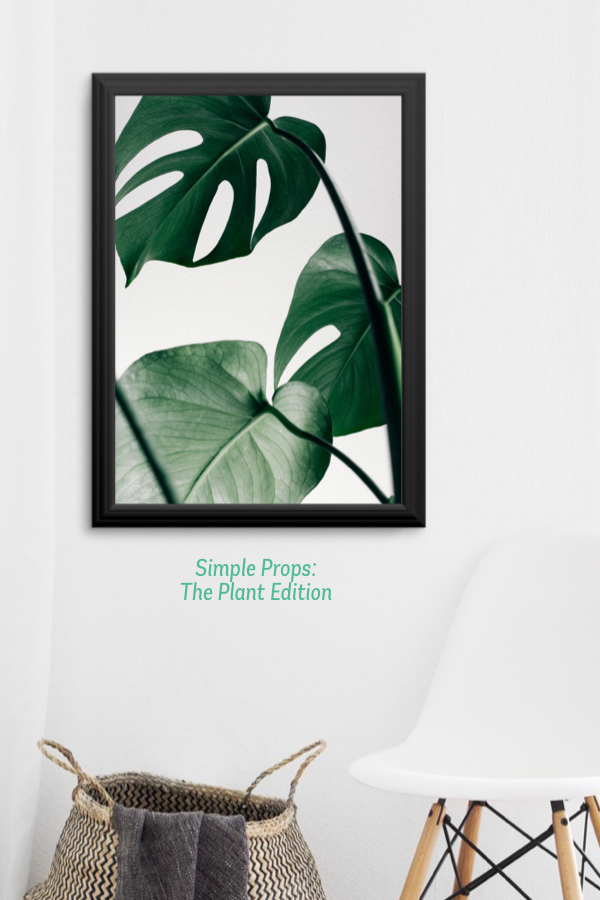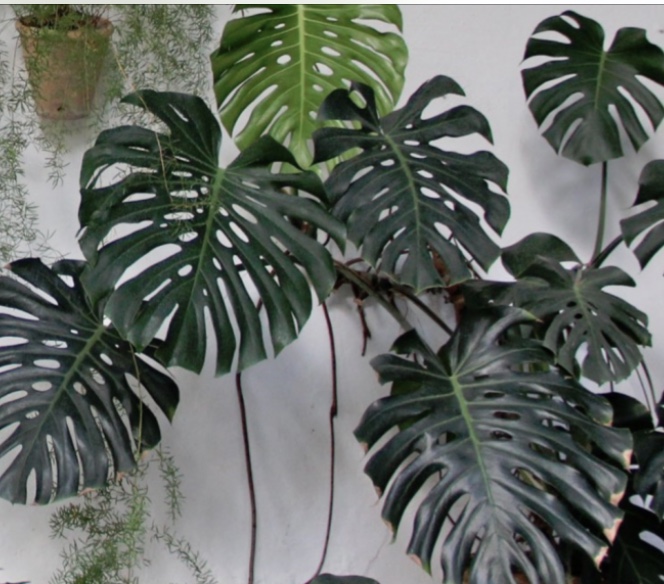
Plants have long served as great props for photoshoots and television productions. In this edition of “Simple Props” we spotlight a group of luscious houseplants and succulents that you can use to add rich texture and a pop of fresh color to your next photoshoot backdrop. We have curated this collection of camera ready plants for you to incorporate into your next shoot. Plus, helpful information about these plants and how to care for them.

Dracena Golden Heart – Native to Tropical Africa
The Dracena Golden Heart is a beautiful forgiving and a GIVING plant. This plant does not require much attention, but gives a lot back to us. The dracena golden heart plant can not tolerate direct sunlight and performs best in filtered indoor light. If you have a semi-shaded area – that is ideal for the dracena golden heart as well. or even it can be placed in a semi shared area of a room.So, if you have a sheer curtain that is in front of sunny window – this is a great location as well. Dracaena plants do not needs a lot of watering – just hydrated mist the leaves and soil. Do not water this plant to the point of soggy. Allow the top of the soil to dry completely between waterings.

Fiddle Leaf Fig – Native to Africa
The Fiddle Leaf Fig is probably my favorite plants out of our entire selection and I’m not alone here. This tropical rainforest plant has a strong fan base on social media for its attractive huge green leaves. The Fiddle Leaf Fig requires good lighting, proper drainage and warm, humid conditions.

Monstera
Native to Central America
Monstera, the plant with the leaf-hole, is a standout in photo shoots. The monstera has two houseplant varies, the Monstera delicioa and Monstera adansonii. This plants thrives in indirect light, but can handle bright light if situation in it. You can water this plant every one to two weeks. Always check that the plant’s soil has dried out before you water. This plant loves humidity, but the normal room temperature is more the appropriate.

Asparagus Fern – Native to Africa
This fluffy houseplant is a classic and you will love it. Asparagus ferns is an evergreen perennial with long lace- like thin branches. This plant does require a little more care than the other plants presented and will need regular pruning. Wear gloves to avoid the hidden sharp thorn. Place this fern in bright light, but do not place in direct sunlight. Direct sun exposure will cause the leaves to bleach out (turn a light green or yellow color) even burn. turn love moist soil. So just a watering it and this plant will thrive.
SMALL PLANTS THAT POP
Chinese Evergreen
Chinese Evergreen is one best houseplants for beginners. It is a solid and independent plant that does not need a lot of attention. This plant can be placed in low light (it will need less watering) and can tolerate bright spots as well (it will need more waterings). Place on a small tabletop and strike a pose and it lights, camera, action!
African Violet
The African Violet is a popular houseplant for its small size and gorgeous bloom color. This plant requires bright, but not indirect light. Consider rotating this plants once a week to help all the leaves receive the right amount of light and maintain an even shape.
Ponytail Palm
The ponytail palm is a cute and whimsical succulent, which gets its name from its long curly hairlike leaves and sleek trunk. You will enjoy having this easy to care for plant in your home because it is very forgiving. Ponytail palms technically needs bright light, but can thrive indoors in low light condition. As a succulent, allow this plants soil to dry out significantly between waterings.
Philodendron Moonlight
The philodendron moonlight is low maintenance attractive indoor houseplant. Its bright yellow new growth leaves gradually turn into light green leaves with age. This is a durable plant that performs great in bright light, but you do not want to place it directly in sunlight. During the winter allow the soil to dry out before watering.
For Extra Pop, Try Clustering
Try grouping the Sansevieria, ZZ Plant, and Hoya together on a shelf or table. These plants range from “5 to “12 tall. These plants work well together because the Sansevieria “upright, variegated leaves” complement the durable layered rich green leaves of the ZZ plant. The Hoya plant is a bright addition to this group. Its tear-shaped leaves makes the collection fluid. You will find that this group of houseplants is carefree and adaptable.
***Disclaimer: Please consult a nursery professional about the before purchasing any of the above plants to ensure that they are safe for children and pets.***